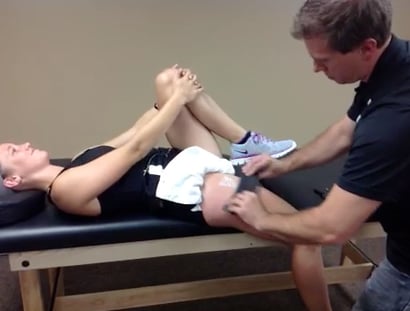As patients today are experiencing more inflammatory processes due to stress, diet, lifestyle and other triggers, more chiropractic physicians are turning to instrument-assisted soft tissue mobilization to help treat chronic myofascial pain.
Pain in the nerve fibers, tissues, muscles, ligaments, fascia and tendons can all be treated using these tools and techniques. But this only describes what the problem is. The bigger and better question is often why: Why is a patient experiencing pain or restricted motion in a certain area?In some cases, you may find yourself  treating the same painful condition over and over again. Patients experience relief after a procedure, only to have the pain return in a matter of days. But you can decrease your treatment time by searching for the functional “why” instead. For example, the “what” or diagnosis is an acute ankle strain that won’t heal with traditional treatment recommendations, but as we dig deeper into the fascial lines and functional muscle interactions, we find that this problem could be related to a chronically weak hip.
treating the same painful condition over and over again. Patients experience relief after a procedure, only to have the pain return in a matter of days. But you can decrease your treatment time by searching for the functional “why” instead. For example, the “what” or diagnosis is an acute ankle strain that won’t heal with traditional treatment recommendations, but as we dig deeper into the fascial lines and functional muscle interactions, we find that this problem could be related to a chronically weak hip.
When you consider the fact that all our muscles are connected somehow along the functional fascial plane lines—the bottom of the heel to the calf, to the hamstring into the pelvis, and over the glutes, into the back, and then up over the head and to the eyebrows—it’s easy then to understand how chronic pain could actually be caused by an injury elsewhere, with far-reaching functional implications to the musculoskeletal system.
Tools such as PHS Chiropractic’s Fluid Motion Soft Tissue Tools (FMST) can assist chiropractors throughout the diagnosis and treatment process. We can often identify the adhesion or primary dysfunction more quickly due to an increased sensitivity in tissue as the tool glides and assesses tissues. These tools also help prevent overuse injury on the part of the practitioner—for example, tendonitis in the hands or wrists in those who use their hands for soft tissue mobilization. And because the two-piece FMST tools are designed so that every edge is functional on concave and convex surfaces of the body, practitioners can focus on their treatments instead of having to switch through many tools to find the correct treatment surface.
Once the “why” has been identified, these tools can then help patients recover faster by implementing tissue proliferation and boosting blood flow to the area, resulting not just in pain relief but also increased range of motion. That is an important distinction, particularly for the active person who wants to be able to participate fully in his or her sport or activity of choice.
Today’s practices are turning more and more toward improving range of motion for those suffering from chronic myofascial pain. And by digging deeper, chiropractors can start tissue proliferation in the correct area so that patients can begin changing their lives from years of suffering and start on a road of healing.


